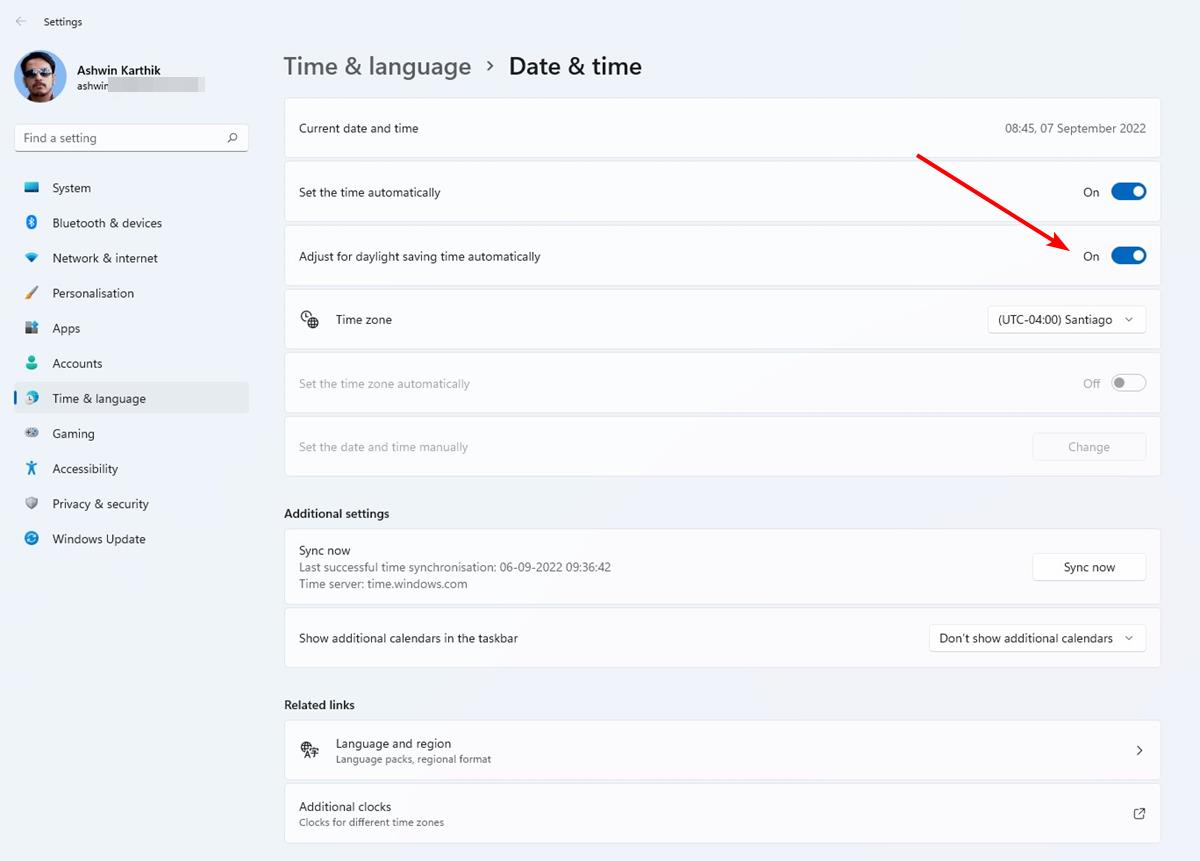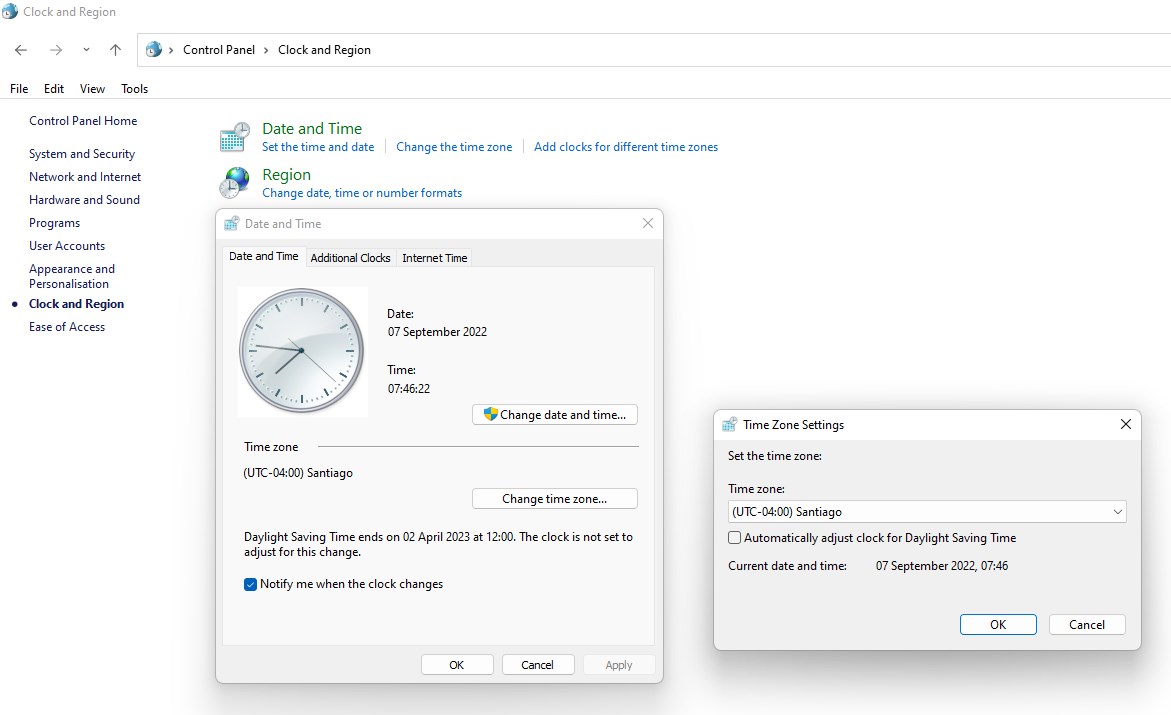Microsoft has warned that users in Chile could run into issues because of an upcoming change in the Daylight Savings Time followed in the region. The good news is that there is an easy fix for the problem.

The Chilean government made an announcement last month stating that Daylight Savings Time would not start on September 4th, per the original schedule. Instead, the South American Country will set its clocks ahead by 60 minutes, starting at 12:00 AM on September 10th.
As you may know, Windows computers, like most devices, supports network-based time synchronization to keep your system’s date and time up-to-date. While it may not sound like a big deal, the gap in the time caused by the postponement of Chile’s DST start date, could result in various problems.
Windows users in Chile could run into issues because of Daylight Savings Time
If a computer’s time is not set accurately, it will affect all apps. Timestamps on files, logs, etc. will be incorrect, for example, if you edit a document and save it, its timestamp will be behind by an hour, and this may affect your work. Clocks, alarms, reminders, and automated tools that rely on Scheduled tasks may not run at the correct time.
Microsoft says that this bug could also impact notifications, meetings in apps and cloud services including Teams, and Outlook. Protocols which are time-dependent, e.g. Kerberos, may lead to authentication failures when you try to log on to services. You may not be able to access websites in your browser if your operating system’s time settings are incorrect.
The Redmond company says that users outside of Chile may also be affected by the issue, if they try to connect to servers or devices located in Chile, as the difference in the timezone’s settings may not be recognized by the system. Meetings and appointments that are set in Chile’s timezone will also follow an incorrect schedule. These are some of the examples that were highlighted by Microsoft.
The DST issue affects the following versions of Windows: Windows 10, Windows 11, Windows 8.1, Windows 7,Windows Server 2022; Windows Server 2019; Windows Server 2016; Windows Server 2012 and Windows Server 2008.
Microsoft is working on a fix to mitigate the issue, which will be delivered in a future update. But there’s a workaround that users can try right now. An article on Microsoft’s support portal (h/t Neowin) advises users to disable an option that adjusts the time automatically based on the timezone’s DST.
Note: The following workaround is only meant for users in the Santiago time zone, and the Easter Islands time zone.
How to disable Daylight Savings Time in Windows 10 and 11
1. Open the Settings app, and select Time and Language section on the sidebar.
2. Click on Date and Time in the right pane. Optionally, you can just type Date and Time in the Start menu, to access this page.
3. Disable the option that is labeled “Adjust for daylight saving time automatically.”
Users can alternatively disable the setting from the Control Panel applet for Clock and Region. Click on Date and Time, and then on the Change time zone button. Uncheck the option for “Automatically adjust clock for Daylight Saving Time”.

You may re-enable the above setting after Daylight Savings Time starts in your region, i.e, after 12:00 AM on September 11th, 2022, to sync the computer’s clock automatically.
Thank you for being a Ghacks reader. The post Microsoft says that Windows users in Chile could run into issues because of Daylight Savings Time appeared first on gHacks Technology News.
